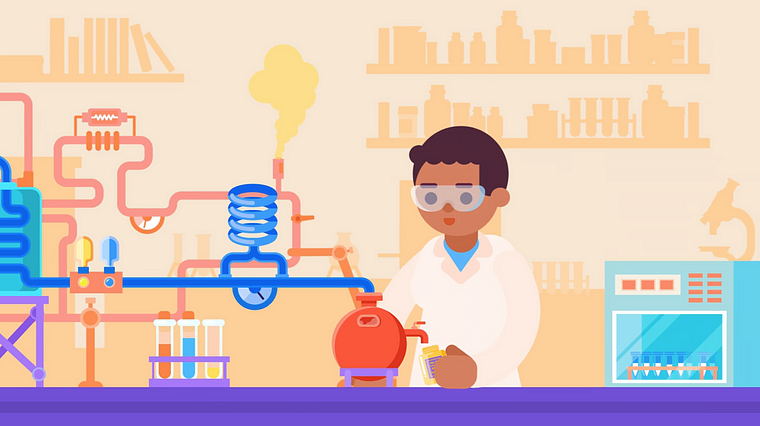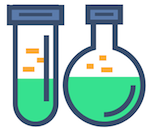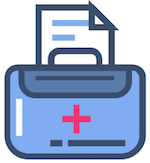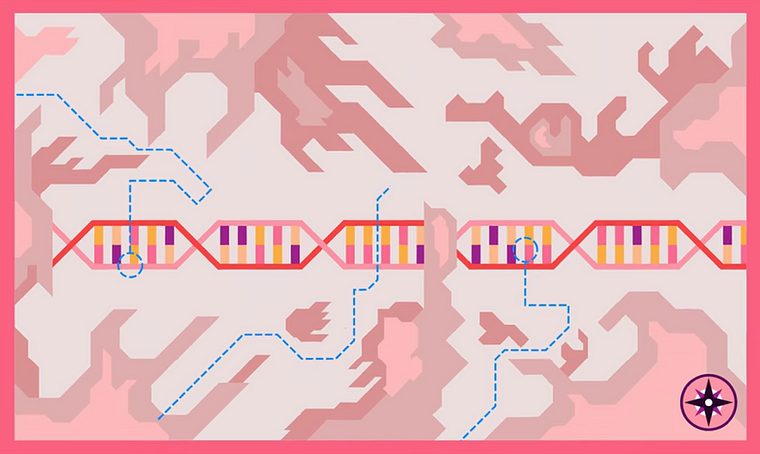Ready to learn Artificial Intelligence? Browse courses like Uncertain Knowledge and Reasoning in Artificial Intelligence developed by industry thought leaders and Experfy in Harvard Innovation Lab.
AI for Diagnostics, Drug Development, Treatment Personalisation, and Gene Editing
Machine Learning has made great advances in pharma and biotech efficiency. This post summarizes the top 4 applications of AI in medicine today:
1. Diagnosing diseases
Correctly diagnosing diseases takes years of medical training. Even then, diagnostics is often an arduous, time-consuming process. In many fields, the demand for experts far exceeds the available supply. This puts doctors under strain and often delays life-saving patient diagnostics.
Machine Learning — particularly Deep Learning algorithms — have recently made huge advances in automatically diagnosing diseases, making diagnostics cheaper and more accessible.
How machines learn to diagnose
Machine Learning algorithms can learn to see patterns similarly to the way doctors see them. A key difference is that algorithms need a lot of concrete examples — many thousands — in order to learn. And these examples need to be neatly digitized — machines can’t read between the lines in textbooks.
So Machine Learning is particularly helpful in areas where the diagnostic information a doctor examines is already digitized.
Such as:
- Detecting lung cancer or strokes based on CT scans
- Assessing the risk of sudden cardiac death or other heart diseases based on electrocardiograms and cardiac MRI images
- Classifying skin lesions in skin images
- Finding indicators of diabetic retinopathy in eye images

Examples of AI diagnosing diseases
Since there is plenty of good data available in these cases, algorithms are becoming just as good at diagnostics as the experts. The difference is: the algorithm can draw conclusions in a fraction of a second, and it can be reproduced inexpensively all over the world. Soon everyone, everywhere could have access to the same quality of top expert in radiology diagnostics, and for a low price.
More advanced AI diagnostics are coming soon
The application of Machine Learning in diagnostics is just beginning — more ambitious systems involve the combination of multiple data sources (CT, MRI, genomics and proteomics, patient data, and even handwritten files) in assessing a disease or its progression.
AI won’t replace doctors anytime soon
It’s unlikely that AI will replace doctors outright. Instead, AI systems will be used to highlight potentially malignant lesions or dangerous cardiac patterns for the expert — allowing the doctor to focus on the interpretation of those signals.
2. Developing drugs faster

Developing drugs is a notoriously expensive process. Many of the analytical processes involved in drug development can be made more efficient with Machine Learning. This has the potential to shave off years of work and hundreds of millions in investments.

AI has already been used successfully in all of the 4 the main stages in drug development:

Stage 1: Identifying targets for intervention
The first step in drug development is understanding the biological origin of a disease (pathways) as well as its resistance mechanisms. Then you have to identify good targets (typically proteins) for treating the disease. The widespread availability of high-throughput techniques, such as short hairpin RNA (shRNA) screening and deep sequencing, has greatly increased the amount of data available for discovering viable target pathways. However, with traditional techniques, it’s still a challenge to integrate the high number and variety of data sources — and then find the relevant patterns.
Machine Learning algorithms can more easily analyse all the available data and can even learn to automatically identify good target proteins.

Stage 2: Discovering drug candidates
Next, you need to find a compound that can interact with the identified target molecule in the desired way. This involves screening a large number — often many thousands or even millions — of potential compounds for their effect on the target (affinity), not to mention their off-target side-effects (toxicity). These compounds could be natural, synthetic, or bioengineered.
However, current software is often inaccurate and produces a lot of bad suggestions (false positives) — so it takes a very long time to narrow it down to the best drug candidates (known as leads).
Machine Learning algorithms can also help here: They can learn to predict the suitability of a molecule based on structural fingerprints and molecular descriptors. Then they blaze through millions of potential molecules and filter them all down to the best options — those that also have minimal side effects. This ends up saving a lot of time in drug design.

Stage 3: Speeding up clinical trials
It’s hard to find suitable candidates for clinical trials. If you choose the wrong candidates, it will prolong the trial — costing a lot of time and resources.
Machine Learning can speed up the design of clinical trials by automatically identifying suitable candidates as well as ensuring the correct distribution for groups of trial participants. Algorithms can help identify patterns that separate good candidates from bad. They can also serve as an early warning system for a clinical trial that is not producing conclusive results — allowing the researchers to intervene earlier, and potentially saving the development of the drug.

Stage 4: Finding Biomarkers for diagnosing the disease
You can only treat patients for a disease once you’re sure of your diagnosis. Some methods are very expensive and involve complicated lab equipment as well as expert knowledge — such as whole genome sequencing.
Biomarkers are molecules found in bodily fluids (typically human blood) that provide absolute certainty as to whether or not a patient has a disease. They make the process of diagnosing a disease secure and cheap.
You can also use them to pinpoint the progression of the disease — making it easier for doctors to choose the correct treatment and monitor whether the drug is working.
But discovering suitable Biomarkers for a particular disease is hard. It’s another expensive, time-consuming process that involves screening tens of thousands of potential molecule candidates.
AI can automate a large portion of the manual work and speed up the process. The algorithms classify molecules into good and bad candidates — which helps clinicians focus on analysing the best prospects.
Biomarkers can be used to identify:
- The presence of a disease as early as possible — diagnostic biomarker
- The risk of a patient developing the disease — risk biomarker
- The likely progress of a disease — prognostic biomarker
- Whether a patient will respond to a drug — predictive biomarker
3. Personalizing treatment
Different patients respond to drugs and treatment schedules differently. So personalized treatment has enormous potential to increase patients’ lifespans. But it’s very hard to identify which factors should affect the choice of treatment.
Machine Learning can automate this complicated statistical work — and help discover which characteristics indicate that a patient will have a particular response to a particular treatment. So the algorithm can predict a patient’s probable response to a particular treatment.
The system learns this by cross-referencing similar patients and comparing their treatments and outcomes. The resulting outcome predictions make it much easier for doctors to design the right treatment plan.
4. Improving gene editing

Clustered Regularly Interspaced Short Palindromic Repeats (CRISPR), specifically the CRISPR-Cas9 system for gene editing, is a big leap forward in our ability to edit DNA cost effectively — and precisely, like a surgeon.
This technique relies on short guide RNAs (sgRNA) to target and edit a specific location on the DNA. But the guide RNA can fit multiple DNA locations — and that can lead to unintended side effects (off-target effects). The careful selection of guide RNA with the least dangerous side effects is a major bottleneck in the application of the CRISPR system.
Machine Learning models have been proven to produce the best results when it comes to predicting the degree of both guide-target interactions and off-target effects for a given sgRNA. This can significantly speed up the development of guide RNA for every region of human DNA.
Summary
AI is already helping us more efficiently diagnose diseases, develop drugs, personalize treatments, and even edit genes.
But this is just the beginning. The more we digitize and unify our medical data, the more we can use AI to help us find valuable patterns — patterns we can use to make accurate, cost-effective decisions in complex analytical processes.



